English longbow
The English longbow, also known as the "longbow" or literally "longbow", is considered one of the most famous examples weapons the era of the Middle Ages. For a long time the English army relied on archers. The battles of the Hundred Years War in France have demonstrated over and over again that this tactic is correct.
The long bow was not invented by the British
The bow is one of the oldest weapons used by humans for hunting and war.
Bows were massively used many millennia ago, and the first arrowheads were made of stone. Naturally, a long bow, which in history The Middle Ages came in as English was not really an invention of the British.
In Scotland, the longbow has been known since about 2000 BC. e., later such bows were found in the territory of Wales. It is believed that the longbow appeared here around the 600s with the beginning of the Viking raids. The longbow itself was a simple bow type and was apparently known throughout Europe. And its active use began in the Stone Age.
Similar bows have been found by archaeologists in Denmark and Switzerland. At one time, Caesar wrote about the yew bows used by the Celtic warriors. Long bows were also used by Germanic tribes who fought with the Roman Empire in the 168th century AD. NS. Longbows dating back to the Viking Age have been found in Denmark and Iceland. Moreover, their length could be from 185 to XNUMX cm. Considering the average height of the inhabitants of Europe in those years, this best characterizes the size of the weapon in relation to the size of the shooter himself.
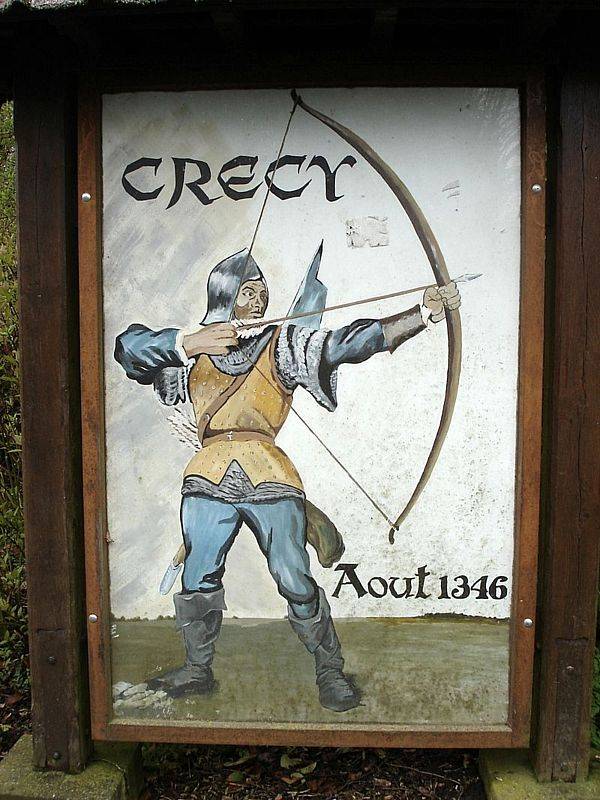
English shooter on a signboard commemorating the Battle of Crecy, photo: wikimedia.org
The English longbow that went down in history, the British troops began to use widely after the setbacks they suffered in the battles in Wales and Scotland during the feudal wars. Around the XNUMXth century, the kings of England decided to take this weapon into service, relying on archers. This was one of the ways to effectively counter the Welsh and Scottish spearmen.
The device of the English longbow
An English longbow is a human-sized or taller bow that was very widespread in medieval England. Feudal and internecine wars in the territory of modern Great Britain, as well as the Hundred Years War, became a real benefit of weapons. The battles in the fields of France made the weapon so famous.
Initially, the shape of a long bow could be spindle-shaped with thinning, which was observed in the area of the weapon's handle, and the shoulders of the bow could be flat. However, most often the bow shaft had a pronounced D-shape. It was this section that was typical for most of the bows that were used by English arrows in the XIII-XIV centuries.
If in Wales long bows were made from rough unpolished elm, in England yew was used for this purpose. Yew bows were very strong and durable. The fibers of the yew tree gave the wood greater elasticity, which also played an important role. Curiously, the leaves of the yew tree were poisonous to livestock, so such trees were often cut down. In England, this eventually led to the fact that yew was imported into the country from other countries, for example, from Spain and Italy.
Typically, the length of the English bow was in the range from 1,7 to 2,1 meters. If in the middle of the arc the width of the bow was 3-4 cm, then along the edges it decreased to 1,8-3 cm. At the level of the capture of the bow by the shooter it reached 5-6 cm. On the English bow there was no special deepening for the arrow, before the shot it lay on the archer's fingers. The shape of the bows of those years followed the structure of the wood from which they were made, so some bows could be slightly bent. The durability of the product was much more important than beautiful shapes.
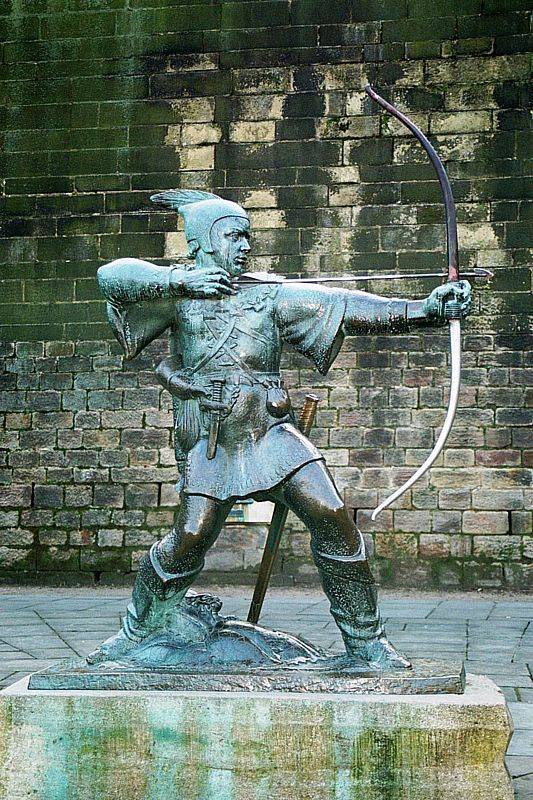
Monument to Robin Hood in Nottingham, photo: wikimedia.org
Starting from about the XNUMXth century, special inserts with grooves, which were made from horn, began to appear at the ends of the long English bow. The bowstring was fixed in these recesses. The inserts were needed to strengthen the tips of the bow, they were supposed to protect the wood from possible splitting by the bowstring.
The string itself was made from hemp, and in some cases from silk. It is not surprising that the cost of the bowstring alone could be equal to half the cost of the bow itself. To protect against moisture, the bowstring could be specially coated with wax. The bowstring diameter reached 3,2 mm.
It took an experienced gunsmith about one day to produce a long English bow.
Combat characteristics of the long English bow
According to information that has come down to us, shooters who were accepted in England for royal service were required to be able to shoot at a distance of 400 yards (365 meters). But even this was not the limit in theory. With a good tailwind and shooting from a hill, the range could increase. At the same time, in most battles of that era, the firing range of archers almost never exceeded 200-300 yards. And this range was quite enough in those years.
The range of a direct shot from a long English bow did not exceed 30-40 meters. To fire at a long distance, the shooter had to increase the elevation angle, which, in turn, reduced accuracy. It is believed that experienced, well-trained archers were able to shoot relatively accurately at 100 yards when it came to hitting a single target. It was possible to fall asleep to enemies in a dense formation with a hail of arrows at long distances.
The firing range could be influenced, in addition to the pulling force of the bow itself, which depended on the quality of the wood used and the processing, also the angle of the shot and the weight of the shells used. Arrowheads for English longbows weighed 6 to 24 grams. Heavy arrows with roughly 20 grams tips gave the best range results.
The arrows themselves for longbows were relatively standardized in England as they were produced in mass quantities. One military campaign could need 400-800 thousand arrows. To increase the penetrating power, they were comparatively heavy - 60–80 grams. For comparison, modern sports bow arrows weigh only 20 grams. The arrows were usually made of ash or poplar, and their average length was about 76 cm.
Even despite attempts at standardization, archers achieved the greatest accuracy only when they had at their disposal arrows from a master they knew or made of their own. Otherwise, differences in length, mass, aerodynamic shape were necessarily manifested, which ultimately influenced the flight of the arrow.
The outcome of the battle was decided not by bows, but by trained arrows
The bet on archers, armed with a long English bow, was made by King Edward I Long-legged. He managed to call under his banners and organize effective detachments of archers. Payment played an important role in this. Archers were paid well and regularly. The salary was issued first every six days, and then every three days.
The second important point was constant training. The English monarchs made sure that a sufficient number of trained archers could always be recruited in the country. Archer training began at the age of 7, and the process itself was quite long and difficult.
This is directly evidenced by studies of the skeletons of English archers, which were studied by scientists. Heavy loads led to a pronounced curvature of the spine, so if the archer lived to an old age for those times, he definitely had serious health problems. In addition to the spine, the fingers of the right hand, the left forearm and the wrists were affected.
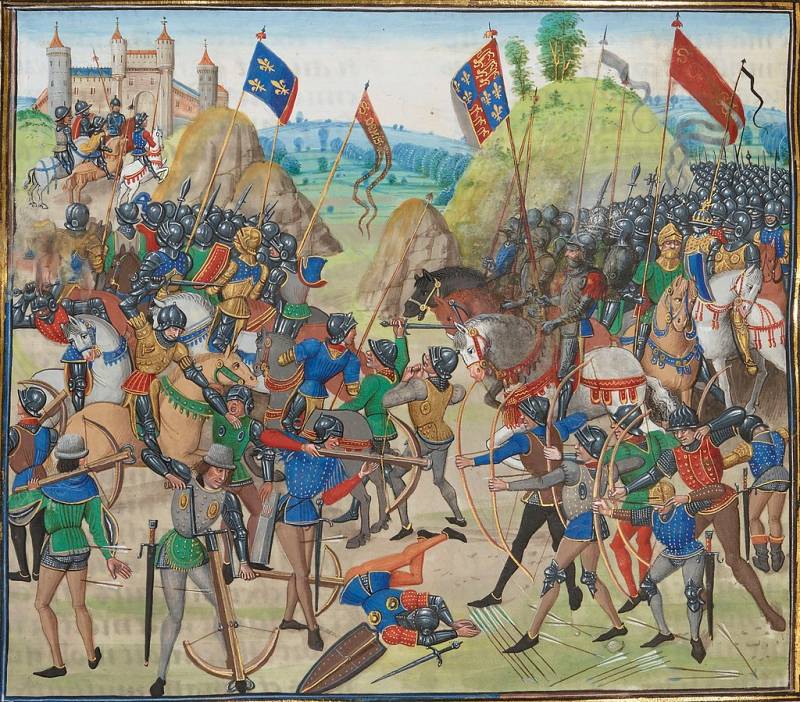
Battle of Crecy (1346). Miniature from Froissard's Chronicles, XNUMXth century, image: wikimedia.org
King Edward III of England introduced compulsory archery competitions in the country, which were held every Sunday after visiting the church. Only lawyers and clergymen were exempted from such competitions. Shooting ranges were organized throughout the country, and shooters were selected.
These measures and the rate on archers allowed England to always have a combat-ready army at hand.
The English army was at its peak during the siege of Calais in 1346-1347. It is believed that at that time there were 5 horsemen and 340 infantry in the army, a total of 26 fighters, of which 963 were archers. For that period, it was a huge army.
The bubonic plague epidemic that followed in Europe for a long time deprived the generals of all countries of the opportunity to bring large masses of troops to the battlefields.
Tactical features of the use of archers
Thanks to good preparation and training, an English archer could fire up to 10–12 arrows per minute, and the strongest and most experienced fighters could fire up to 15–16 arrows. This rate of fire was much higher than the crossbows of those years, which gave no more than 4 rounds per minute. The possible inaccuracy of shooting was compensated for by the massiveness of the arrows fired.
An archer's ammunition in those years rarely exceeded 72 arrows, which at the maximum rate of fire would have provided only 6-7 minutes of continuous shooting. The arrows themselves were transported after the army in carts. In the XIV century, English archers did not use quivers, arrows were usually tied in bundles of 12 or 24 arrows.
Before firing, archers spread arrows in front of them or stuck them in the ground. This was very convenient and made it possible to shoot quickly, it took more time to pull the arrow out of the quiver.
This method had another not the most obvious positive effect.
The arrowheads stuck in the ground were dirty. When wounded, this ensured the introduction of infection into the wound, which, taking into account the level of medieval medicine, could end in an extremely deplorable way for a wounded warrior.
Even without piercing armor, arrows could concussion or wound warriors, and they posed an even greater threat to unprotected horses. By the time the Hundred Years War began, the French knights did not protect their horses in any way, which made them an easy target. In battle, the horses struck by arrows either fell dead, or, being wounded, rushed across the battlefield, disrupting the formation and order of the troops. Fallen horses could cripple the rider or the warriors around, becoming an obstacle.
British tactics and the mass of trained shooters made it possible to shoot thousands of arrows at the enemy in a short period of time. At the same time, the arrows themselves strengthened their positions with stakes dug into the ground, or used natural obstacles that the attackers could not overcome on the move, from the rear they could cover their positions with carts. Also, archers were often located on the flanks or in the shape of a crescent or a V, which made it possible to crossfire and shoot the attackers in the most vulnerable places.
It was a well-known small arms in Europe, the use of which was perfected by the British.
The tactics and good long-term training of the shooters, who were spared no salary, did their job. As in most wars, the outcome of battles was decided not by weapons, but by the people who used these weapons.
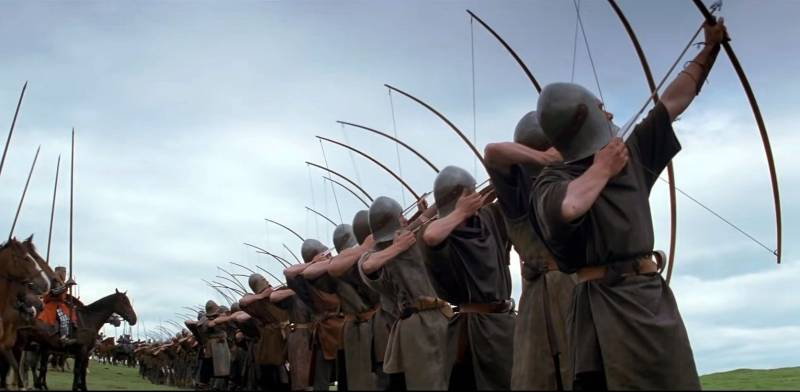
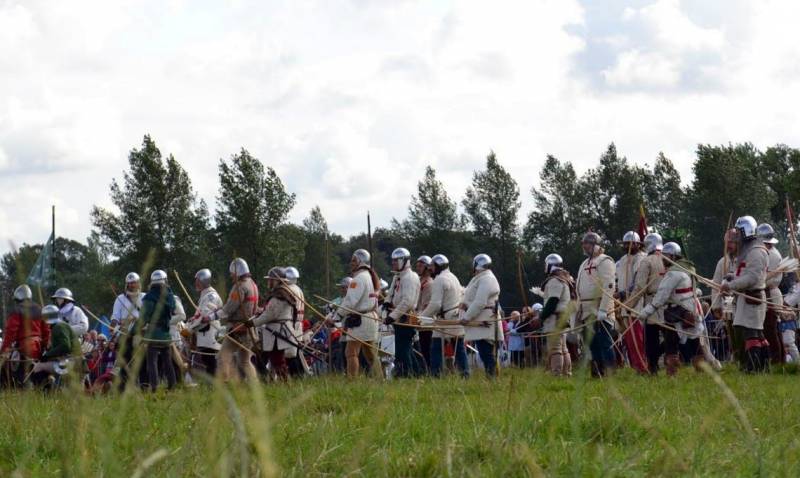
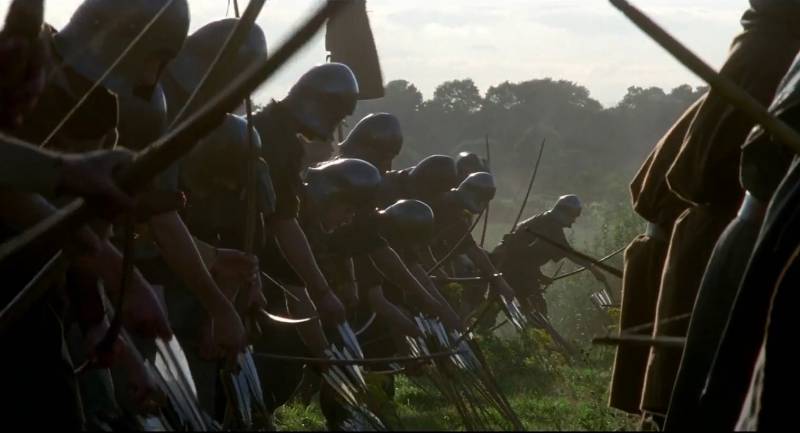
Information